Dirección
304 North Cardinal St.
Dorchester Center, MA 02124
Horas laborales
Lunes a viernes: 7:00 a. M. - 7:00 p. M.
Fin de semana: 10 a. M. - 5 p. M.
Dirección
304 North Cardinal St.
Dorchester Center, MA 02124
Horas laborales
Lunes a viernes: 7:00 a. M. - 7:00 p. M.
Fin de semana: 10 a. M. - 5 p. M.

En los hospitales modernos, la atención al paciente evoluciona continuamente con los avances en tecnología y equipamiento. Una de las innovaciones que ha mejorado significativamente la eficiencia y la seguridad de los entornos médicos son los equipos de puentes colgantes médicos.
Antes de profundizar en el contenido, me encantaría que te unas a mí en mis plataformas de redes sociales, donde comparto más información, interactúo con la comunidad y publico actualizaciones. Puedes conectarte conmigo de la siguiente manera:
Facebook:https://www.facebook.com/profile.php?id=100071234835011
LinkedIn:https://www.linkedin.com/company/74943205/admin/dashboard/
YouTube:www.youtube.com/@shandongexpertmedicalequip4695
TikTok:www.tiktok.com/@expertmedical
Ahora, comencemos nuestro viaje juntos. Espero que el contenido que se incluye aquí te resulte interesante, interesante y valioso.

In modern hospitals, patient care is continually evolving with advancements in technology and equipment. One of the innovations that have significantly improved the efficiency and safety of medical environments is medical pendant bridge equipment. This specialized equipment is designed to streamline workflows, enhance patient care, and create a more organized and functional healthcare environment. This blog will explore how medical pendant bridge equipment enhances patient care in hospitals, detailing its features, benefits, applications, and more.
Medical pendant bridge equipment refers to integrated systems mounted from the ceiling or walls in hospital rooms and operating theaters. These pendants are equipped with various medical devices, utilities, and control systems that are essential for patient care. They are designed to provide easy access to medical equipment, reduce clutter, and improve the workflow of medical staff.
Medical pendant bridge equipment offers numerous benefits that contribute to improved patient care and operational efficiency in hospitals. Here’s how:
Medical pendant bridge equipment centralizes essential medical devices and utilities within easy reach. This organization minimizes the need for staff to move around the room searching for equipment, allowing for quicker responses to patient needs. The result is a more streamlined workflow and reduced risk of delays in care.
By integrating medical gas outlets, electrical outlets, and communication systems into one unit, medical pendant bridge equipment reduces the risk of accidents and equipment failure. The elimination of tangled cords and hoses reduces tripping hazards and ensures that critical equipment remains operational and accessible.
Medical pendants are mounted from the ceiling or walls, freeing up floor space in hospital rooms and operating theaters. This efficient use of space allows for a more flexible and open environment, which can accommodate additional equipment or provide more room for medical personnel to maneuver.
The streamlined organization and easy access to medical devices help reduce the time patients spend in uncomfortable or stressful situations. With medical equipment readily available and organized, procedures can be conducted more efficiently, minimizing patient discomfort and anxiety.
Medical pendant bridge equipment improves the overall efficiency of hospital operations. By providing easy access to essential tools and systems, medical staff can perform tasks more quickly and effectively, leading to better patient outcomes and a more efficient healthcare environment.
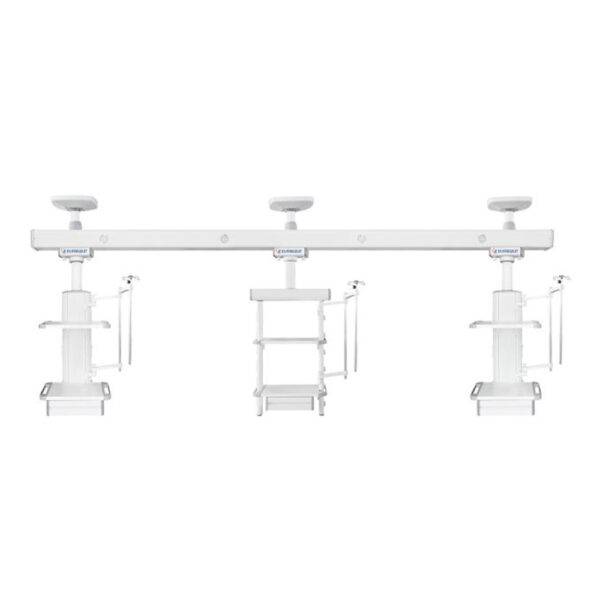

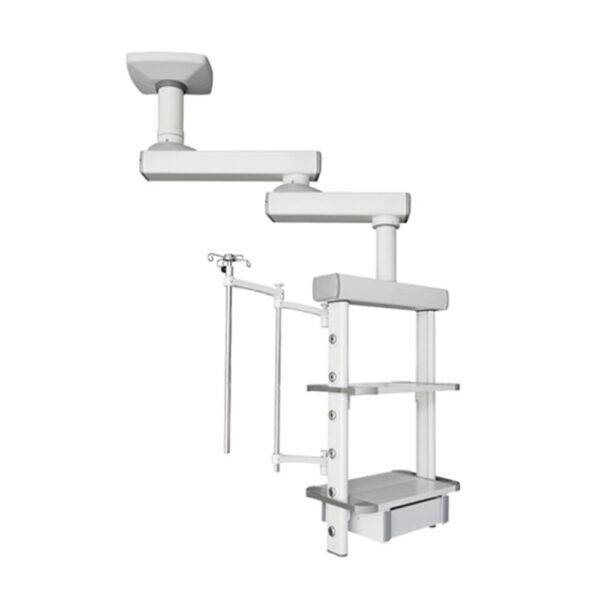


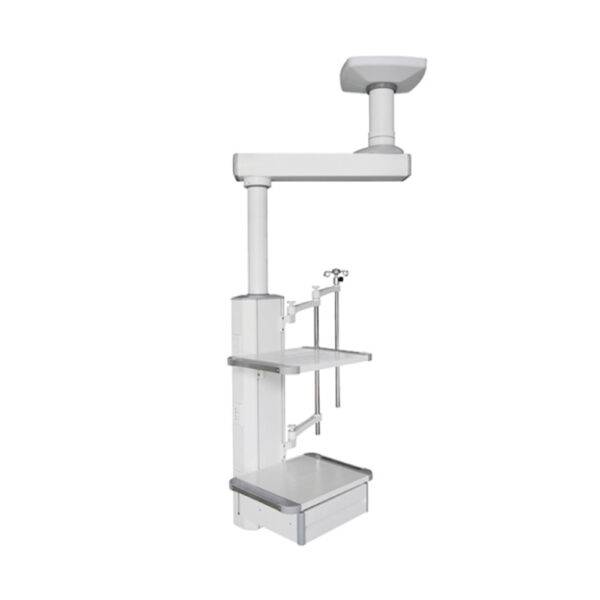
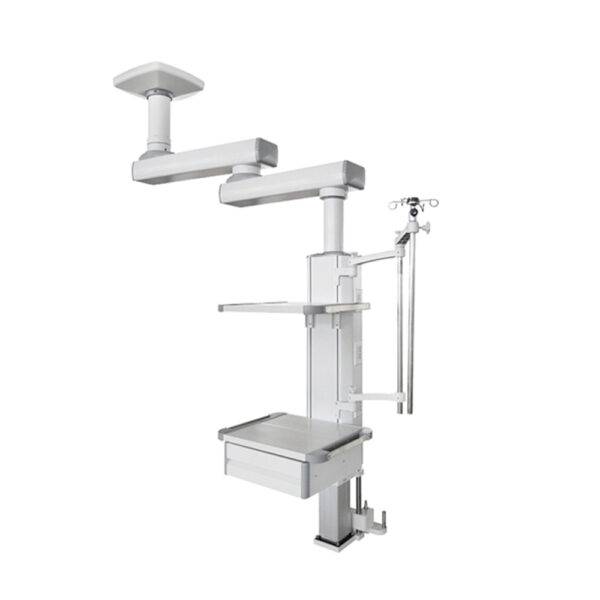
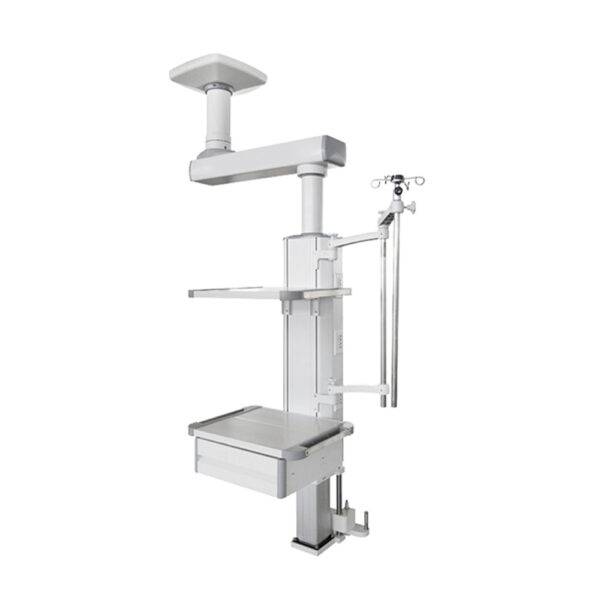
Medical pendant bridge equipment is used in various healthcare settings, each with specific requirements and functions. Here are some common applications:
In operating rooms, medical pendant bridge equipment provides access to surgical lights, anesthesia delivery systems, and other critical equipment. It helps keep the workspace organized and ensures that everything needed for surgery is within easy reach.
In ICUs, pendants are used to manage complex medical equipment, including ventilators and monitoring systems. The ability to easily access and control these devices is crucial for managing critically ill patients.
In emergency rooms, medical pendant bridge equipment helps streamline workflows and keep essential tools and supplies readily accessible. This organization is vital in high-pressure situations where quick and efficient care is required.
In patient rooms, medical pendants provide access to communication systems, lighting, and basic medical equipment. They help create a more comfortable and organized environment for both patients and healthcare providers.
For routine examinations and procedures, medical pendant bridge equipment offers a centralized location for medical instruments and utilities, enhancing the efficiency and effectiveness of patient care.
| Consideración | Descripción | Recomendaciones |
|---|---|---|
| Space Planning | Evaluating the physical space available for installation and the layout of the room. | Conduct a thorough assessment of room dimensions and furniture placement to ensure optimal pendant positioning. |
| Electrical Requirements | Assessing the electrical needs for the pendant, including power supply and backup systems. | Ensure that electrical infrastructure supports the pendant’s power needs and consider redundancy for critical systems. |
| Medical Gas Systems | Integrating medical gas outlets with existing hospital gas systems. | Coordinate with facilities management to align gas systems with pendant requirements and ensure compliance with regulations. |
| Proceso de instalación | Planning the installation process to minimize disruption to hospital operations. | Schedule installation during off-peak hours and communicate with hospital staff to ensure minimal impact on patient care. |
| Training and Education | Training staff on the use and maintenance of medical pendant bridge equipment. | Provide comprehensive training sessions for medical and support staff on equipment operation, safety procedures, and maintenance protocols. |
| Compliance and Standards | Ensuring that the equipment meets hospital and regulatory standards for safety and functionality. | Verify that the pendant equipment complies with relevant healthcare standards and regulations, including those for electrical and gas systems. |
| Maintenance Schedule | Establishing a routine maintenance schedule to ensure ongoing functionality and safety. | Develop a regular maintenance plan, including inspections and servicing, to keep the equipment in optimal condition. |
| User Feedback | Gathering feedback from users to identify any issues or areas for improvement. | Implement a feedback mechanism to collect input from healthcare staff and make necessary adjustments based on their experiences. |
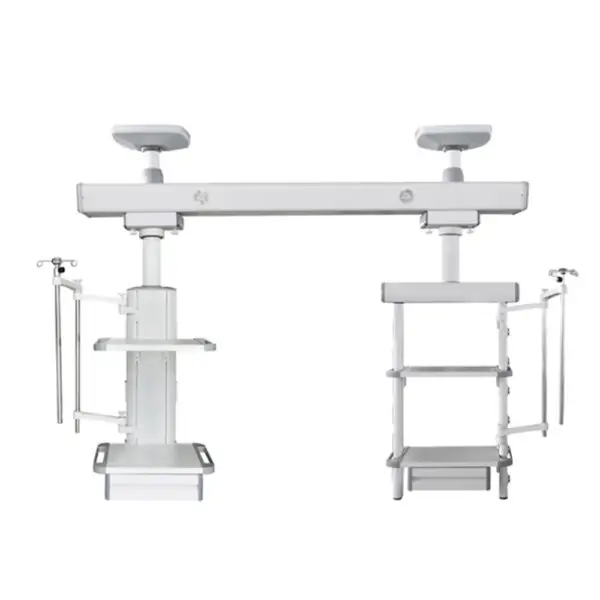
To ensure the longevity and optimal performance of medical pendant bridge equipment, proper maintenance and care are essential. Here are some key maintenance practices:
Conduct routine inspections of medical pendant equipment to check for any signs of wear, damage, or malfunction. Address any issues promptly to avoid disruptions in patient care.
Clean and sanitize all surfaces, including gas outlets, electrical outlets, and storage areas, regularly to maintain a hygienic environment. Use appropriate cleaning agents and techniques to avoid damaging the equipment.
Regularly test the functionality of gas outlets, electrical outlets, and communication systems to ensure they are operating correctly. Perform any necessary repairs or replacements to maintain optimal performance.
Ensure that all equipment connected to the pendant is properly calibrated and functioning within the required specifications. Regular calibration helps maintain accuracy and reliability in patient care.
Adhere to the manufacturer’s maintenance guidelines and recommendations for servicing and care. This ensures that the equipment remains in good condition and meets safety standards.
Medical pendant bridge equipment plays a crucial role in enhancing patient care in hospitals by improving accessibility, safety, and efficiency. Its integration of medical gas outlets, electrical systems, and communication tools helps streamline workflows, optimize space utilization, and enhance patient comfort. By understanding the benefits and applications of medical pendant bridge equipment, healthcare facilities can make informed decisions to improve their operations and deliver high-quality care.
Qué es medical pendant bridge equipment and how does it improve patient care?
Medical pendant bridge equipment is a system mounted from the ceiling or walls that provides access to medical gases, electrical outlets, and communication systems. It improves patient care by organizing essential tools, reducing clutter, enhancing safety, and optimizing workflows in healthcare settings.
What are the key components of medical pendant bridge equipment?
Key components include medical gas outlets, electrical outlets, communication systems, lighting systems, and storage solutions. These components are integrated into one unit to streamline access and organization in medical environments.
How does medical pendant bridge equipment enhance safety in hospitals?
By centralizing medical devices and utilities, medical pendant bridge equipment reduces the risk of accidents, minimizes tripping hazards, and ensures that critical equipment is easily accessible and functional.
What are some common applications of medical pendant bridge equipment?
Common applications include operating rooms, intensive care units (ICUs), emergency rooms, patient rooms, and examination rooms. Each application benefits from improved organization and accessibility provided by the pendant systems.
How should medical pendant bridge equipment be maintained?
Maintenance involves regular inspections, cleaning and sanitizing, checking functionality, ensuring proper calibration, and following manufacturer guidelines. Proper care ensures that the equipment remains operational and safe for patient care.